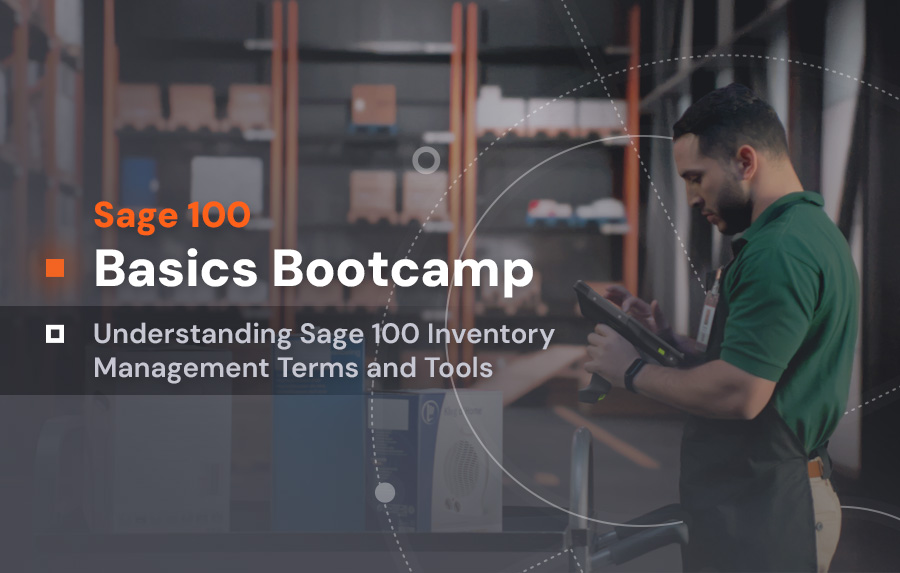Key Terms Explained
Alias Unit of Measure
Inventory management requires tracking products in various units, from bulk shipments to individual sales. An alias unit of measure (UOM) helps businesses seamlessly convert between different UOMs without manual calculations, reducing errors, and streamlining operations. This ensures that inventory counts remain accurate regardless of how products are received, stored, or sold.
Put Into Practice: For example, a beverage distributor might receive soda in cases but sell them as individual cans. With Sage 100 UOM, the system automatically adjusts stock levels when a case is broken down into single units, ensuring precise inventory tracking without requiring manual adjustments. This feature simplifies order fulfillment, prevents stock discrepancies, and enhances overall efficiency in warehouse operations.
Auto-Post
Keeping inventory records accurate and up to date is essential for efficient warehouse operations. Sage 100 auto posting automates the process of updating inventory transactions in real time, eliminating the need for manual data entry. This ensures that stock levels, order statuses, and financial records reflect the latest activity without delays or human errors.
Put Into Practice: When a warehouse worker scans and processes a shipment, the system automatically updates inventory counts without requiring additional steps. This not only saves time but also reduces the risk of miscounts or missed entries, helping businesses maintain accurate inventory records and make informed decisions based on real-time data using Sage 100 inventory management capabilities.
Inventory Adjustment (I/M Adjustment)
Inventory discrepancies can occur due to damaged goods, miscounts, or returns, making adjustments a necessary part of Sage 100 inventory management. An Inventory Management (I/M) Adjustment allows businesses to correct stock levels by manually updating quantities or values within the system. This ensures that financial records and inventory counts remain accurate, preventing discrepancies that could impact operations.
Put Into Practice: If a warehouse receives a shipment with a few damaged products, the damaged units can be adjusted out of inventory without affecting overall tracking. Similarly, if a stock count reveals an overage due to a miscount, an adjustment can reconcile the actual quantity with the recorded data, maintaining precise inventory records.
For example, when a warehouse worker scans and processes a shipment, the system automatically updates inventory counts without requiring additional steps. This not only saves time but also reduces the risk of miscounts or missed entries, helping businesses maintain accurate inventory records and make informed decisions based on real-time data using Sage 100 inventory management capabilities.
Lot Numbers and Extended Lot Tracking
Sage 100 lot tracking is essential for businesses that manage perishable goods, serialized items, or regulated products. A lot number is a unique identifier assigned to a group of items produced or received at the same time, enabling traceability throughout the supply chain. Extended lot tracking in Sage 100 inventory management enhances this by incorporating additional details such as expiration dates, production batches, or vendor information, ensuring compliance and quality control.
For example, a food distributor handling dairy products must track lot numbers to ensure older stock is shipped first and to quickly recall affected products if an issue arises. Similarly, a manufacturer managing raw materials can use extended lot tracking to monitor expiration dates and maintain product integrity, reducing waste and ensuring regulatory compliance.
Multi-Bin Management
In a warehouse, inventory is often stored in multiple locations rather than a single bin or shelf. Multi-Bin Management is a system that allows businesses to store and track inventory across multiple bin locations within a warehouse by allowing items to be stored in multiple bins, shelves, or areas. This system helps optimize space utilization, ensure accurate inventory counts, as well as prevent stockouts, misplacement, and delays.
Put Into Practice: A hardware supplier might store the same type of screws in multiple bins across different warehouse aisles. With multi-bin management, employees can quickly locate available stock without searching manually, ensuring faster order fulfillment. Additionally, businesses can prioritize bin selection based on factors like expiration dates, reducing waste, and improving efficiency.
Pallet/License Plate Tracking
In high-volume warehouses, managing inventory at the pallet level is essential for efficiency and accuracy. Pallet tracking—often referred to as license plate tracking—assigns a unique identifier (license plate number) to an entire pallet or container. This functionality within Sage 100 inventory management allows businesses to move, track, and manage multiple items under a single scan, streamlining warehouse operations and improving traceability.
Put Into Practice: A food distributor shipping bulk products may group multiple cases of frozen goods onto a single pallet. Rather than scanning each case individually, employees can scan the pallet’s license plate barcode to register the entire shipment at once. This reduces handling time, enhances accuracy, and provides better visibility into inventory movement throughout the supply chain.
Directed Physical Count
Physical inventory counts are a necessary but time-consuming task for warehouses and distribution centers. A directed physical count streamlines the process by guiding employees to specific locations and items that need to be counted. This feature of Sage 100 inventory management eliminates manual lists or random checks, the system provides a structured approach to counting, reducing errors and ensuring inventory accuracy.
Put Into Practice: A distributor conducting a cycle count can use directed physical count functionality to send workers to bins in a predetermined order, ensuring no location is skipped. The system automatically records quantities, updates inventory records, and eliminates the need for paper-based tracking. This results in a faster, more accurate counting process with minimal disruption to daily operations.
Optimize Your Inventory Management with ScanForce
Stay tuned for future posts where we’ll dive deeper into even more Sage 100 inventory management strategies, including Directed Picking, Wave Picking/Shipping, and Container Receipt Management. Understanding these key terms is the first step toward improving inventory management, but the right technology makes all the difference. ScanForce’s advanced tools for Sage 100 inventory management help automate inventory tracking, reduce manual errors, and improve overall efficiency.
If you’re ready to take control of your inventory management processes, contact us today to learn how ScanForce can help your business stay ahead of the curve!





